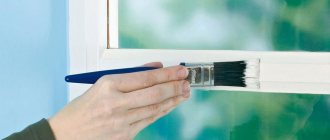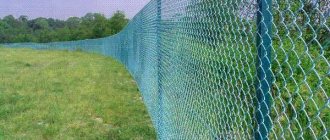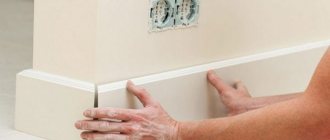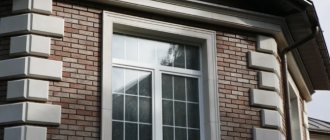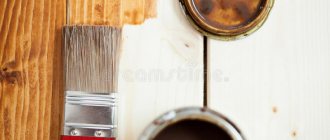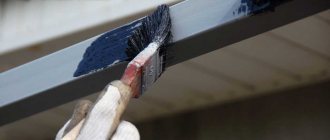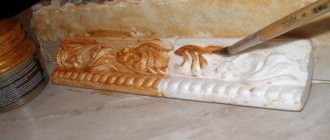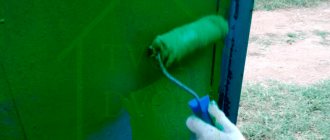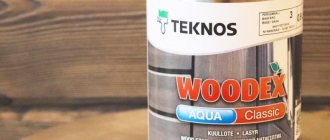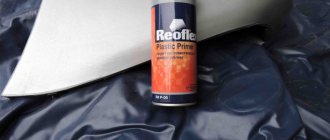Requirements for dyes
To obtain high-quality, durable painting of window frames, it is necessary to take into account all operating conditions. Enamel for windows and doors (if there are additionally wooden doors, it is recommended to paint them at the same time as the frames) must meet the following parameters:
- Location. For wooden doors and frames located on the street side, the dye must have increased moisture resistance and the ability to withstand temperature changes. If you plan to paint windows in the bathroom or kitchen, then you need to pay attention not only to the moisture-repellent properties of the product, but also to its resistance to abrasion, because wooden frames in these rooms have to be washed frequently.
- Availability of additional “bonuses”. For example, fire retardant or antiseptic additives that will protect the wood from fungus or fire.
- Environmentally friendly. The selected material should not have a toxic effect on the human body.
- No smell. For outdoor work, the smell is not of great importance, but indoors the smell should not persist for a long time. The lingering smell of chemicals associated with renovations disrupts the cozy atmosphere of the home.
- Drying speed. This parameter is very important when painting wooden doors and window frames with your own hands from the street side. For outdoor work, it is recommended to use quick-drying compounds.
- Easy to apply with your own hands. Many novice craftsmen, when painting window frames and frames with their own hands, encounter difficulties when applying the dye (drips, uneven coloring), and the quality of the work does not meet decorative requirements. In order for DIY painting to be of high quality and aesthetically pleasing, it is necessary to take into account the fluidity and hiding power of the enamel.
By selecting enamel for windows and doors taking into account these parameters, you can ensure high-quality and durable window repairs with your own hands.
How to choose paint?
Which window paint is best is not so easy to determine. There are a large number of manufacturers whose materials differ from each other in properties, price, and other characteristics. When choosing paint, you need to pay attention to the following:
- What kind of surface does your frame have?
- Do I need to apply paint in several layers?
- Is preparation required, priming the frame before painting?
- Is the new paint compatible with the old one or does the previous layer need to be completely removed?
Do you want to change your windows to modern wooden ones? Read our article “Euro-windows made of wood are not the same as other wooden windows.” Which double-glazed windows are better, plastic or wooden? Review via link
Install wooden windows yourself? No more difficult than plastic ones! Instructions are on our website.
Choosing a coloring agent
For wooden structures in residential premises, the following types of paints will be optimal.
Acrylic
Acrylic - latex or water based - quick-drying, after drying they form a smooth, beautiful film. They are easy to work with and are recommended for use by beginning craftsmen who decide to paint wooden frames with their own hands.
Due to the fact that water or latex is used as a solvent, there is only a slight odor when working with the coloring agent, and after 1-2 hours after drying, the odor completely disappears. Acrylic water-dispersion paints can be used to paint inside and outside. If acrylic-latex ones are used, then they should be indicated “for external or internal use” (latex polymer without additional additives is weakly resistant to temperature changes).
Alkyd
Made on the basis of organic resins and oils, they have a high ability to penetrate into the wood structure. After drying, alkyd dyes form a durable film that is resistant to weather conditions, abrasion and chemicals. Disadvantage: organic-based alkyd substances have a persistent odor that does not fade away for a long time.
Products based on aqueous solvents are less durable. But after drying they have almost no odor and are suitable for painting wooden surfaces in rooms. These solutions take quite a long time to dry, and when used outdoors, a day of warm, clear weather is required.
Oily
Due to its viscosity, this composition based on oil solvents weakly penetrates the wood structure, but forms a durable moisture-repellent layer on the surface. It takes a long time to dry and after drying for a long time has a specific smell. Oil dyes are not used very often for coloring.
Which enamel to choose? Each master decides this for himself, based on the characteristics of the decorative design and his skills.
Why are plastic window structures painted?
Even when carrying out major renovations inside a living room, work rarely concerns PVC windows. But there are situations when painting PVC windows is necessary:
- there is a need to improve the appearance of the window frame. The reason may be poor quality material, which turns yellow or gray over time. Noticeable scratches and stains appear;
- The interior of the facade has changed and the white window does not fit into it. Painting is always cheaper than completely replacing the window structure;
- a colored window is always original. The desire to have a window “unlike others” will come true if special paint for PVC windows is found.
Color coating is obtained not only by dyeing. Professionals use the technology of applying a special color film to plastic - lamination. The frame can be any shade. The new coating is resistant to direct sunlight, water-repellent, and withstands temperature fluctuations and the effects of household chemicals.
There are 2 options for painting plastic windows:
- technology of spraying enameled dye of a polyurethane composition;
- applying varnish material.
The workshops produce painted PVC material to match the color of wood (brown). Its structure differs from the basic white profile.
If it is not possible to purchase a ready-made colored plastic window, then the structure is painted independently.
Color solution
It is not enough to choose a composition with suitable chemical properties. Wooden frames must not only be protected from external influences, but also processed in accordance with the interior.
The paint and varnish industry offers the consumer a wide range of colors of the above-mentioned coloring agents. The windows can be painted either purple or red, but how will this fit into the main design?
Interior decorators recommend using:
- traditional shades of white;
- coloring “like light wood”;
- beige, light yellow and other sunny tones, if this suits the interior design.
Of course, the window frame can be painted any color you wish, but it is worth remembering that too bright or too dark colors bring dissonance to the design of the room.
Painting outdoors is not so demanding when it comes to color tones: frames can be of any color, as long as they are in harmony with the facade.
Types of profile painting
After mixing special additives and stabilizers into the PVC composition, polyvinyl chloride changes its grayish tint to snow-white. This is the base color of the plastic profile. Depending on the further technological cycle, it may remain unchanged or change completely during the production process. Today, several methods for coloring profiles are actively used:
- coextrusion method;
- spraying method;
- mass coloring.
In addition, manufacturers offer a service for applying varnish to the surface of polyvinyl chloride products. Thanks to this treatment, the profiles acquire a noble matte shade and become velvety to the touch. The varnished coating is cured at high temperatures in special ovens, so it has a sufficient margin of safety.
When purchasing any painted windows for installation on the sunny side, you need to be extremely careful. It is necessary to ensure the quality of PVC, which should withstand operation at elevated temperatures. This is due to the fact that with prolonged exposure to sunlight, frames and sashes can become deformed if the quality of the polyvinyl chloride is not high enough. In addition, in such cases it is recommended to choose lighter shades.
What you need for painting
Before you start restoring wooden frames with your own hands, you need to prepare the necessary tools and consumables. Supplies you will need:
- wood putty to level the base;
- wood sealant for filling cracks;
- protective impregnations (if the paint does not contain additional protective additives);
- degreasing solvent;
- masking tape.
In addition to consumables, the following tools will be needed:
- scrapers for removing old coating;
- plane and other tools for leveling the base;
- putty knife;
- screwdrivers and hammer;
- a set of “skins”;
- brushes
What paint coating options are there?
Almost any paint can be applied yourself: you will need a brush or roller. In order to choose the right product, you should know what types of paint are on sale. The following materials can be used for painting wood products:
- Polyurethane dyes.
- Acrylic paints with water-dispersion composition.
- Alkyd enamels.
- Oil based paints.
The most expensive paint does not always win in all respects. The composition of the substance plays an important role, not the manufacturer.
Preparing the base
To make wooden frames look beautiful, it is not enough to simply clean and paint them. Failure to follow all preparatory steps may result in the following:
- The consumption of paints and varnishes will increase.
- After the painted surface has dried, all the unevenness of the wood will become visible.
- The decorative coating will have weak adhesion to the base and will soon begin to crack and peel.
If you want to have beautiful windows for a long time and not have to repaint them every year, then before you paint it yourself, you need to do the following preparation:
- Remove any remaining old paint using scrapers.
- Remove window handles and latches.
- Clean the surface with sandpaper to a smooth base.
- Carefully inspect the frame base. Fill dents and other defects with putty, remove uneven surfaces with a plane. If large cracks appear on the windows during operation, they must be sealed with sealant.
- After leveling, smooth the surface again with sandpaper, wash and dry well.
- Cover the glass with masking tape to prevent primer and enamel from getting on them.
- Treat the wood with a degreasing solvent. This is necessary to remove invisible fatty traces from the base that reduce adhesion. For safe degreasers, when doing DIY repairs, it is recommended to use alcohol-containing compounds, for example, a solution as cheap and accessible to all craftsmen as white spirit. Alcohol-containing products dry quickly and do not leave an unpleasant odor.
- Apply protective impregnation. This step is necessary if the selected enamel or primer mixture does not contain wood-protecting additives. All wood fibers are treated with impregnation using a brush and left until completely dry.
- After the impregnation has dried, the selected primer is applied. The primer should be applied by carefully painting all areas of the surface, moving along the wood fibers. The adhesion of the decorative coating to the base and the consumption of paints and varnishes depend on priming. You should not skimp on primer: experienced craftsmen recommend applying it in 2-3 layers to ensure longevity of the repair - each subsequent layer after the previous one has dried.
After the last layer of primer has dried, you can begin painting.
Preparatory stage
Before painting the PVC profile, it must be prepared:
- The surface intended for painting must be cleaned of dust and dirt. In addition, the remaining film must be removed from it.
- During the preparation process, you need to apply a special tape along the areas intended for painting. Glue the paper tape onto the soap solution so that it can be easily removed upon completion of the work.
- Before applying paint to plastic, its surface must be degreased using products specially designed for this purpose. This will also relieve static stress.
To get an original result, you can paint the windows by mixing several colors. In this case, everything depends on the imagination of the painter, who can mix colored paints with transparent or white ones. The paint is tinted to the desired shade an hour before painting begins.
Features of painting work
Painting wood frames is a little different from traditional wood painting. To get an excellent result, painting should be done as follows:
- Apply a strip 3-5 mm wide to the surface near the glass with a thin brush. This will prevent paint from splashing when the brush touches the glass and will allow you to thoroughly paint the wood-glass joint.
- Carefully paint the glazing beads near the glass.
- Paint the opening part of the sash and where it attaches to the window frame.
- Paint all horizontal parts.
- Apply paint to vertical parts.
After this, the window frame is painted and, lastly, the window sill. After the first layer has dried, the second decorative layer is applied in the same order.
Subtleties when painting surfaces
Choosing paint for PVC
It is better to paint plastic in one layer at room temperature. Pre-application of primers is not required here.
If you have the opportunity to use a spray bottle for work, this way the coating will be done better. Also, paints and varnishes can be applied using brushes or a roller.
Materials for painting take about 8-10 hours to dry, it all depends on the temperature. But, you can use painted plastic only after 3 days. If you need, the coating can be repeated, but only after the first layer has completely dried.
It is also worth paying attention to the fact that in any room there are many objects that can cause a fire or be damaged in a fire. To avoid this situation, it is better to buy fire-retardant paint for painting, the thinner of which is ordinary water.
Useful tips
For DIY window restoration to be successful, experts recommend the following:
- Apply the dye along the wood fibers.
- For the first layer, make the enamel more liquid.
- If drips occur, remove them immediately with a cloth soaked in solvent.
- Remove masking tape immediately after painting is completed. If this is not done and the enamel dries, then removing the adhesive tape can damage the decorative coating.
By selecting the necessary paint and varnish composition and following the suggested recommendations, even a novice master will be able to carry out high-quality restoration work.
Coloring the profile in the mass
The essence of the technology is in the name - various pigments and additives are added to the still liquid mass and mixed evenly in it. This option for adding color to plastic is considered the most reliable and durable. The main disadvantage is the limited number of colors - in addition to white, brown profiles are widely available on sale. It is used both in its pure form and for wood-like lamination, more about which you can read on OknaTrade.
When choosing brown PVC profiles for applying wood-like films, no white areas are visible at joints and untreated surfaces - this is another advantage of body-dyed polyvinyl chloride.
